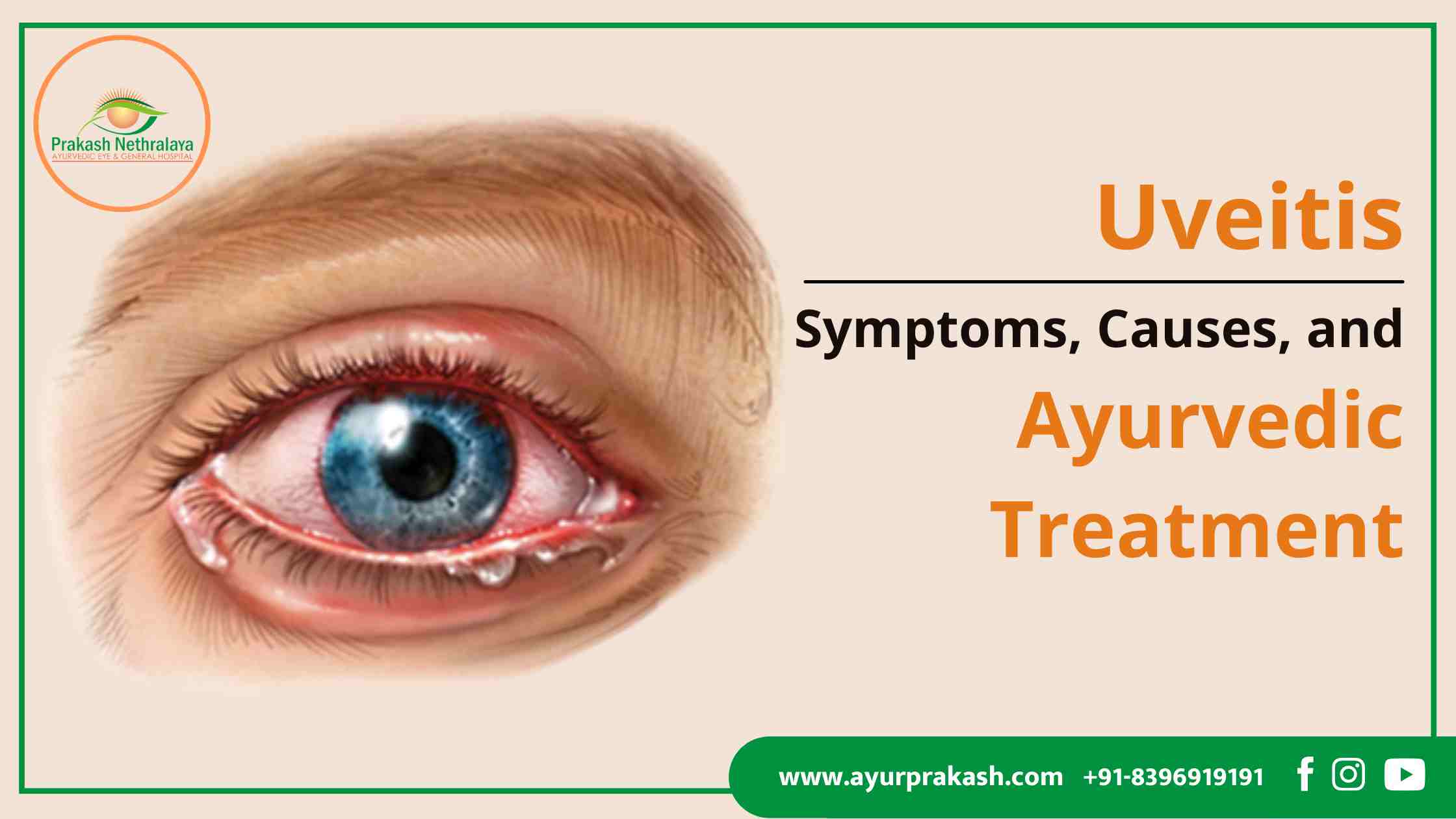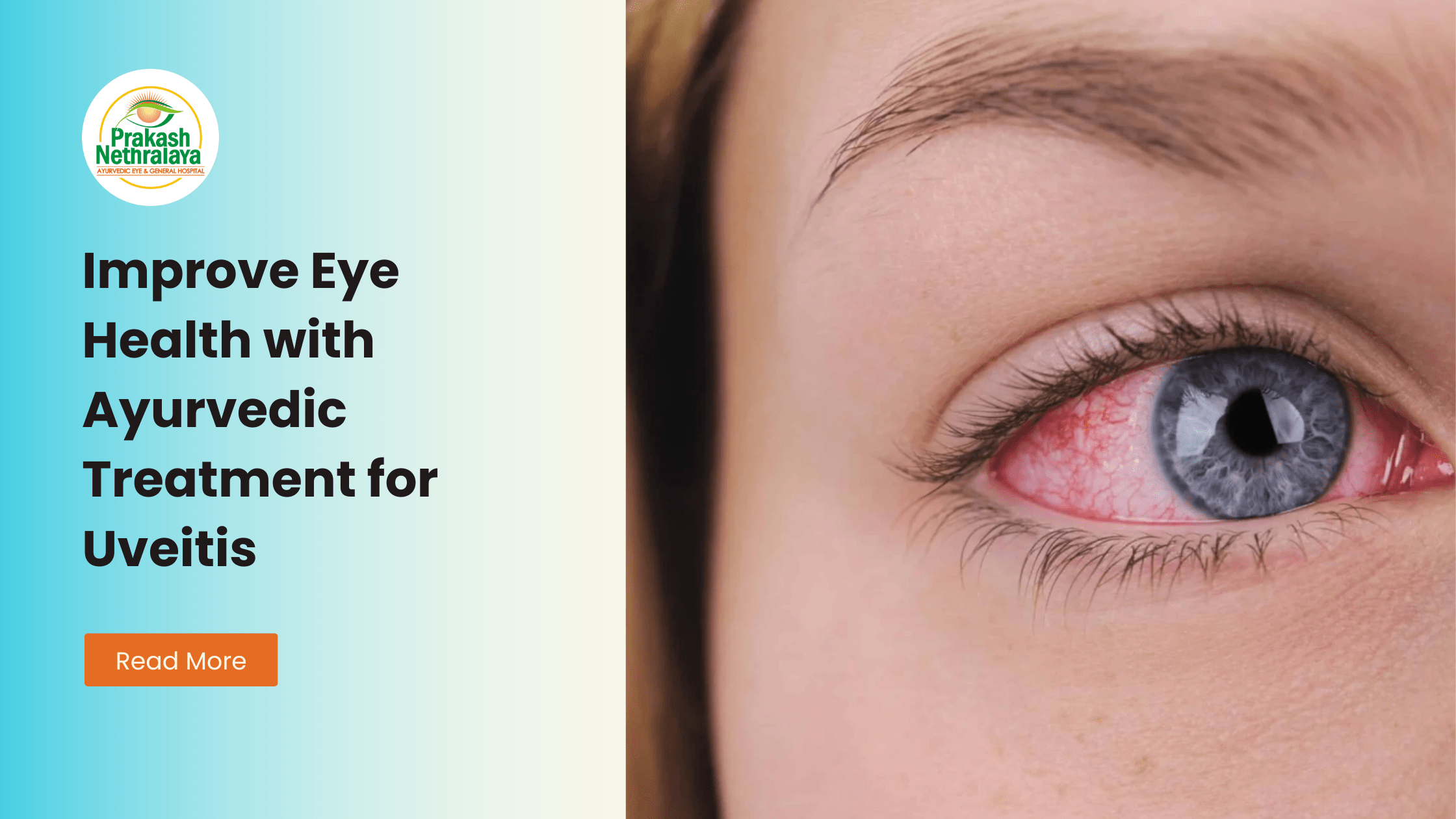What is Uveitis?
The eyes are the most delicate part of the human body. Good or bad, everything affects them. When we eat right and feel good about ourselves, our eyes glow differently. But if anything goes wrong with our system, our eyes are the first to show its signs and symptoms. The problem discussed here is a broad term used for a group of issues related to our eyes.
Medically, Uveitis refers to a set of conditions that cause inflammation in the uvea, the middle layer of the eye. It is a painful condition that blurs the vision and causes redness of the eyes. If not treated on time, it can lead to permanent loss of sight. It is classified into various types depending on its reason. Uveitis mainly affects people falling in the age group of 20-60.
Types of Uveitis
The location of inflammation in the eye decides the category of Uveitis. Though there are several other factors, it is the primary one.
Anterior Uveitis: When the iris of the eye gets affected, it is called anterior Uveitis. It is one of the most common types of Uveitis and can happen even to the healthiest person. You may have anterior Uveitis in one or both eyes. Ayurveda cures it with natural herbs that reduce swelling, redness, and pain caused by Uveitis.
Intermediate Uveitis: As the name suggests, intermediate Uveitis affects the middle part of the eye. It is known as iridocyclitis for this reason. Intermediate Uveitis is common among people with autoimmune diseases like lupus. Herbs like Giloy are useful in curbing the effects of intermediate Uveitis.
Posterior Uveitis: Posterior Uveitis, also known as choroiditis, causes swelling and inflammation in the posterior part of the eyes. These tissues and arteries carry blood to the rear end of the eyes. Posterior Uveitis is common in people who have fungal infections, viral infections, or autoimmune disorders. So, it is cured with herbs or medicines that strengthen our body’s response to harmful pathogens.
Panuveitis: It is the worst case of Uveitis when all layers of the uvea get infected. The infection goes from the front to the rear part of the eye.
It is essential to treat Uveitis on time. It may lead to more complicated issues like glaucoma or cataracts, or loss of optical power.
Symptoms of Uveitis
Symptoms of Uveitis may occur suddenly. The problem may take years or months to develop. Once the symptoms appear, the situation gets worse within days. Sometimes, there are no symptoms, and very subtle signs of Uveitis are noticed during regular eye checkups.
The most noted signs of Uveitis are:
- Redness in eyes.
- Consistent pain.
- Photophobia causes increased light sensitivity.
- Degraded visual power.
- Blurred vision.
- Floating, dark spots in the area of vision (eye floaters).
- Headaches.
- Altered color of iris.
- Small-sized pupil.
If overlooked or not treated on time, Uveitis can lead to several complications. Some of the major complications are:
- Permanent loss of vision.
- Damage to the optic nerve.
- Retinal scarring.
- Retinal swelling.
- Cataracts.
- Retinal detachment.
Uveitis Causes
Various reasons lead to inflammation and redness in our eyes. Sometimes, Uveitis develops as an autoimmune disease that affects either one or both eyes. Doctors and researchers have identified below given reasons as the primary causes of this problem:
- A side-effect of specific medications.
- Eye surgery or injury.
- Though it is scarce, sometimes, eye cancer, lymphoma causes Uveitis.
- Certain infections like herpes zoster, toxoplasmosis, tuberculosis, or cat-scratch diseases cause Uveitis.
- Autoimmune and inflammatory disorders are the primary reason for Uveitis. The list of such diseases includes systemic lupus erythematosus, sarcoidosis, ankylosing spondylitis, and a few others.
- In the USA, exposure to dirt is a well-known reason for Uveitis.
Ayurvedic Treatment of Uveitis
The Ayurvedic treatment for Uveitis begins with a detailed meeting between patient and doctor. The doctor may need to look at the previous test and treatment reports of the patients. Further discussions include a thorough investigation of lifestyle, eating habits, medical state, digestion errors, and patient’s psychology. Then the doctor decides the plan of treatment based on all this information.
In the initial stage, the patient needs to take herbal medicines that take care of the problem. The next step involves several panchakarma therapies that cure the problem forever. The doctors make different decisions after checking the digestive fire of the patient. They may prescribe them treatments like tharpana, Kizhiswedan, Netradhara, Thakradhara, and Virechan with specified medicines. Yoga and dietary restrictions are a must to be followed throughout treatment. Uveitis needs a minimum of six months to a year for complete rectification.
Herbs Used In Uveitis Treatment
A few Ayurvedic herbs may help reduce irritation, swelling, and redness of eyes in uveitis patients.
- Turmeric: It is an anti-inflammatory, immunity-boosting, and anti-infective agent. It is useful in relieving the symptoms of Uveitis.
- Giloy: Giloy is highly useful in reducing the inflammation of eyelids in Uveitis. Just like turmeric, it provides relief from the most painful symptoms of Uveitis.
- Liquorice: The liquorice root is considered essential in the cure of Uveitis. It controls the most chronic symptoms of this disease. Research conducted by the Korean Journal Ophthalmology in 2012 showed that liquorice roots are effective against inflammation in the eyes. They also keep a check on the body’s immune response, reducing the risk of complications closely related to Uveitis.
Natural Therapies Included In Treatment of Uveitis
A number of therapies are recommended in the treatment of Uveitis. Akshi-tarpan, for example, is a handy method that regulates the normal functioning and health of the eyes. The therapies used to cure Uveitis depend on the kind of doshas identified in the patient’s body. These therapies are categorized into three different phases:
- Pre-purification phase.
- Main Purification Phase.
- Post Purification Phase.
These phases include various oil massages, medicinal enemas, and some herbal cleansing techniques. Once the purification process is complete, the doctors administer Rasayana therapies and Netra Kriya-Kalpa. Panchakarma offers one of the most potent and natural methods of curing Uveitis. Some of the significant treatments recommended for this disease are:
- Puttapakam: Medicinal extracts from plants, some fats, and minerals are applied directly over the eyes.
- Tharpanam: Medicated ghee is applied to the eyes for a considerable amount of time.
- Thakradhara: It is a procedure that involves pouring medicated buttermilk over the patient’s head for a predetermined time-frame. Buttermilk helps in relieving extra heat out of the body and detoxifying eyes.
- Sekam: Eyes are washed with medicated kashayam before other therapies.
- Aschotanam: Putting eye drops in the eyes.
These therapies are performed according to the Prakriti and Dosha in a patient’s body. Every human has a different body that reacts differently to various processes.
Why Choose Ayurveda?
Ayurveda has a unique approach to the root cause of diseases. It looks beyond the signs and symptoms of the disease. It treats medical problems in two ways: the first is Shodhan, and the other is Shaman. Shodhan involves complete detoxification of the body with Panchakarma therapies. On the other hand, Shaman balances the doshas through restricted diet, lifestyle changes, and herbal medicines. Ayurvedic medicines are most effective when the patients’ body is purified with Panchakarma.
Secondly, Ayurvedic medicines are plant extractions and completely natural. They are pure and mostly administered either raw or in powdered form. Their natural state eliminates the risks associated with the synthetic and chemical medication. These medicines take a little longer than chemical medication to cure the diseases by root.
Lastly, Ayurveda is not just medical science. It has deep philosophical and spiritual aspects ingrained in it. The subjects are not patients but humans with a specific identity and spirit. The treatments individually customized for every patient.
Why Prakash Nethralaya?
Prakash Nethralaya is a leading Ayurvedic hospital that specializes in eye diseases. It offers both online and offline consultations to patients from all over the world. Its founder, Dr. Dinesh Sharma, is an experienced Ayurvedic eye specialist. He has successfully treated some of the most critical eye ailments. He and his team have successfully treated more than 50 000 patients to date. You can count on them for reliable consultations and treatment. If you cannot reach the hospital physically, you can always opt for online consultations with doctors.
Other than eye diseases, the hospital also offers treatment for general ailments and gynaecological disorders. All treatment methods followed here are non-surgical, painless, completely natural, and safe for all. The place is home to all those who wish to get rid of medical issues naturally and holistically. Please check out our contact details to get in touch with our team or for online consultation. If you live in nearby areas, you can always visit us during office hours on all working days of the week.
We hope you find this post informative regarding Uveitis Eye Disease. For more health-related posts stay tuned with Prakash Nethralaya.




